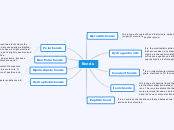par Fraih Shahatit Il y a 7 années
215
bonus map
Chemical bonds are integral to the structure and function of molecules. Glycosidic bonds are specific to carbohydrates, connecting sugar molecules, such as glucose units forming maltose.

par Fraih Shahatit Il y a 7 années
215

Plus de détails